1. Life
James Clerk Maxwell's life was marked by an exceptional intellectual curiosity from an early age, coupled with a deep engagement with both formal education and independent scientific inquiry. His career spanned several prestigious academic institutions, where he made groundbreaking discoveries that revolutionized the understanding of the physical world.
1.1. Early Life and Childhood (1831-1841)
James Clerk Maxwell was born on June 13, 1831, at 14 India Street in Edinburgh, Scotland. His father, John Clerk Maxwell of Middlebie, was an advocate from the prosperous Clerk family of Penicuik. His mother, Frances Cay, was the daughter of Robert Hodshon Cay and sister of John Cay. Maxwell's father had inherited the Maxwell property in Dumfriesshire, the Middlebie estate, encompassing 1507 acre (610 ha), and had added "Maxwell" to his name upon inheritance. James was a first cousin to both the artist Jemima Blackburn and the civil engineer William Dyce Cay, who became a close friend and served as his best man.
Maxwell's parents married in their thirties; his mother was nearly 40 when he was born. They had an elder daughter, Elizabeth, who died in infancy. When James was young, the family moved to Glenlair House in Kirkcudbrightshire, which his parents had built on their inherited estate. From an early age, Maxwell displayed an unquenchable curiosity, often asking "what's the go o' that?" at the sight of anything that moved, shone, or made noise. His mother, recognizing his potential, took responsibility for his early education, a common practice for women of the house in the Victorian era. By age eight, he could recite long passages from John Milton and the entire 119th Psalm, demonstrating a detailed knowledge of scripture. His mother, Frances, died in December 1839 from abdominal cancer when he was eight. His education was subsequently overseen by his father and his aunt Jane, both of whom played pivotal roles. His formal schooling initially struggled under a 16-year-old hired tutor who was reportedly harsh, leading to the tutor's dismissal in November 1841. On February 12, 1842, his father took James to a demonstration of electric propulsion and magnetic force by Robert Davidson, an experience that had profound implications for the young boy.
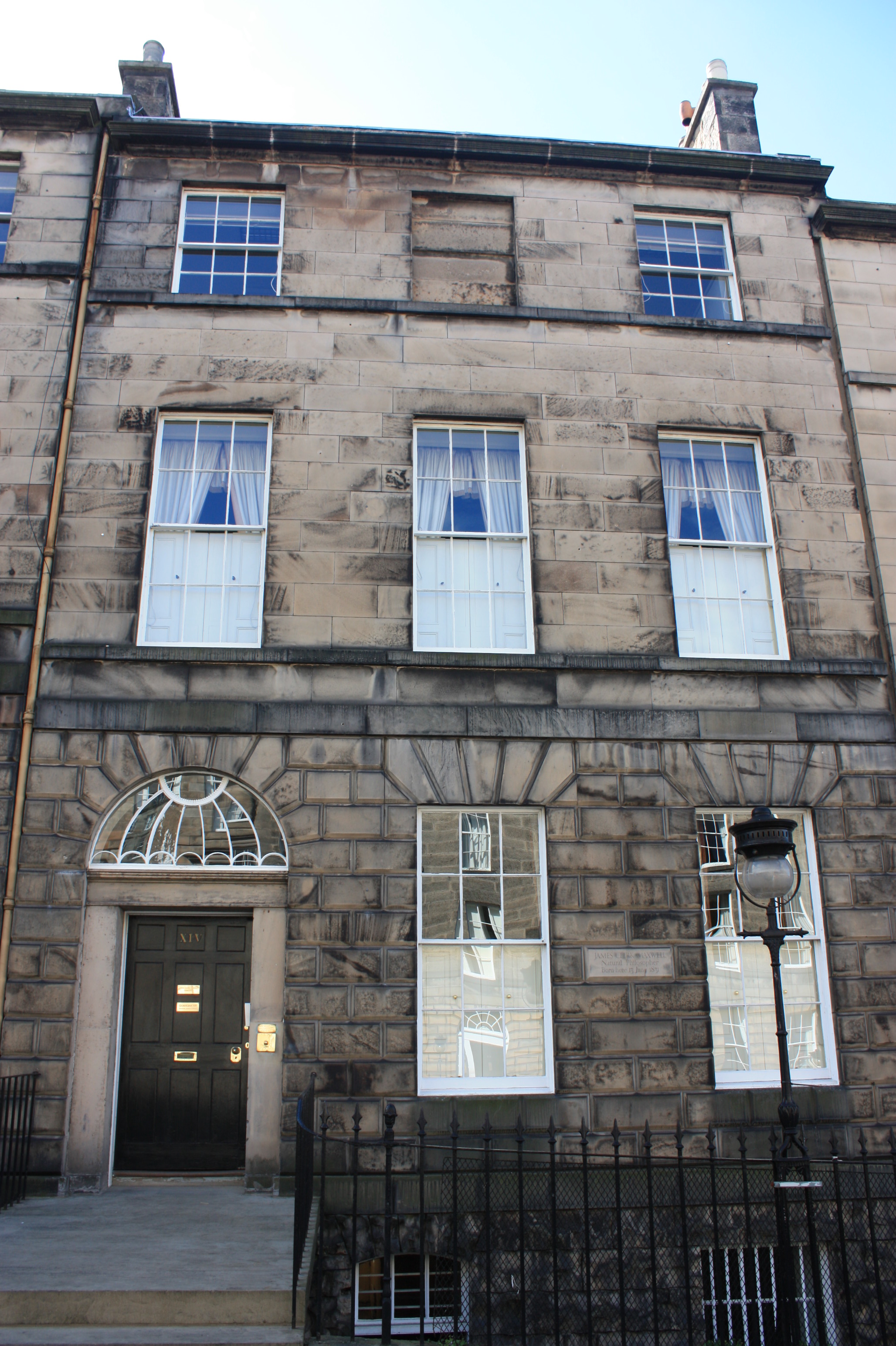
1.2. Schooling at Edinburgh Academy (1841-1847)
Maxwell was sent to the prestigious Edinburgh Academy in 1841. He lodged during term times at his aunt Isabella's house, where his passion for drawing was encouraged by his older cousin Jemima. The 10-year-old Maxwell, having been raised in isolation on his father's rural estate, initially struggled to fit in at school. The first year was full, so he had to join the second year with classmates a year his senior. His manners and Galloway accent made him seem rustic to other boys, and he earned the unkind nickname "Daftie" (meaning 'gannet'). He reportedly never resented the epithet and bore it without complaint for many years. His social isolation at the Academy ended when he befriended Lewis Campbell and Peter Guthrie Tait, two boys of similar age who would later become notable scholars and remained lifelong friends.
Maxwell's interest in geometry developed early; he rediscovered the regular polyhedra before receiving formal instruction. Despite winning the school's scripture biography prize in his second year, his academic work initially went unnoticed. However, at age 13, he won the school's mathematical medal and first prize for both English and poetry, demonstrating his early academic prowess. His interests extended far beyond the school syllabus, and he did not pay particular attention to examination performance.
At the age of 14, Maxwell wrote his first scientific paper, titled "On the description of oval curves and those having a plurality of foci." In this work, he described a mechanical method for drawing mathematical curves using a piece of twine, and explored the properties of ellipses, Cartesian ovals, and related curves with more than two foci. The paper was presented to the Royal Society of Edinburgh by James David Forbes, a professor of natural philosophy at the University of Edinburgh, because Maxwell was deemed too young to present the work himself. Although René Descartes had previously examined such multifocal ellipses in the 17th century, Maxwell had simplified their construction.
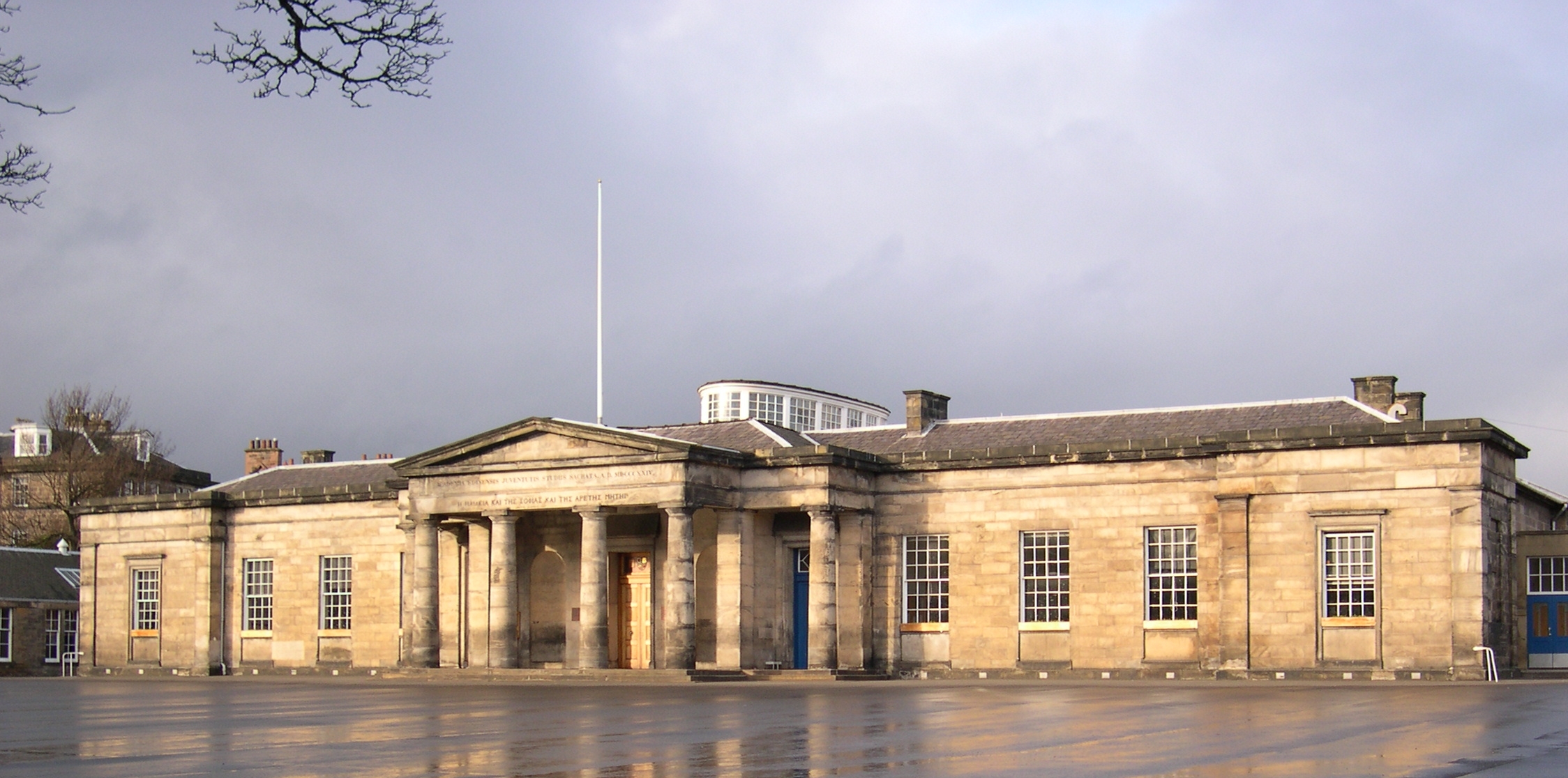
1.3. University of Edinburgh (1847-1850)
Maxwell left the Edinburgh Academy in 1847 at the age of 16 and enrolled at the University of Edinburgh. Although he had the option to attend the University of Cambridge, he decided to complete his undergraduate studies in Edinburgh. The academic staff at the university included highly regarded figures such as Sir William Hamilton, who lectured him on logic and metaphysics; Philip Kelland, who taught mathematics; and James David Forbes, his natural philosophy professor.
Maxwell found his classes not overly demanding, which allowed him ample time for private study, both at the university and especially when he returned home to Glenlair. During these periods, he experimented with improvised chemical, electric, and magnetic apparatus. His primary focus, however, was on the properties of polarized light. He famously constructed shaped blocks of gelatin, subjected them to various stresses, and used a pair of polarizing prisms, given to him by William Nicol, to observe the colored fringes that formed within the jelly. This practice led him to discover photoelasticity, a method used to determine the stress distribution within physical structures.
At age 18, Maxwell contributed two papers to the Transactions of the Royal Society of Edinburgh. One of these, "On the Equilibrium of Elastic Solids," laid the groundwork for his later important discovery regarding the temporary double refraction produced in viscous liquids by shear stress. His other paper, "Rolling Curves," like his earlier "Oval Curves," was also presented to the Royal Society by his tutor Kelland, as Maxwell was again considered too young to present it himself.
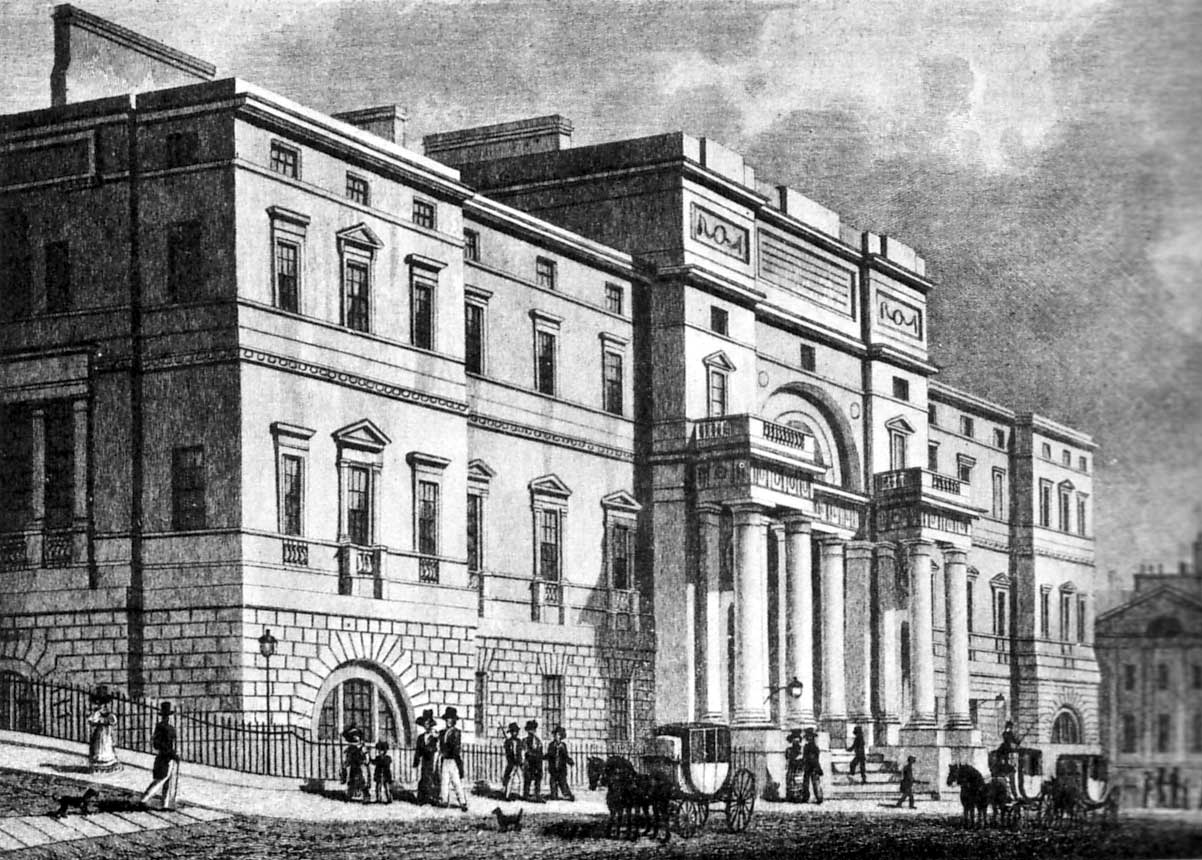
1.4. University of Cambridge (1850-1856)
In October 1850, already an accomplished mathematician, Maxwell moved from Scotland to the University of Cambridge. He initially enrolled at Peterhouse, Cambridge, but soon transferred to Trinity College, Cambridge, believing it would offer better opportunities for a fellowship. At Trinity, he was elected to the elite secret society known as the Cambridge Apostles, an exclusive debating society for the intellectual elite. His time at Cambridge fostered rapid intellectual and spiritual development, as he used his essays for the "Apostles" to explore and solidify his understanding of both science and his Christian faith. He believed in examining everything without exception, holding that Christianity was the only belief system that encouraged such open inquiry.
During the summer of his third year, Maxwell spent time at the Suffolk home of Reverend C. B. Tayler. The Tayler family's deep faith left a significant impression on Maxwell, particularly after he was nursed back to health by the minister and his wife. Upon returning to Cambridge, Maxwell expressed in a letter to Tayler his conviction that only through God's grace could one overcome wickedness, finding fulfillment partially in science and society, but perfectly by committing to God.
In November 1851, Maxwell began studying under William Hopkins, a highly successful mathematics tutor known as the "senior wrangler-maker." In 1854, Maxwell graduated from Trinity with a degree in mathematics, ranking second highest in the final examination, earning him the title of Second Wrangler. He was later declared equal with Edward Routh in the more challenging Smith's Prize examination.
Immediately after his graduation, Maxwell presented his paper "On the Transformation of Surfaces by Bending" to the Cambridge Philosophical Society. This was one of his few purely mathematical papers, showcasing his growing stature as a mathematician. Maxwell decided to remain at Trinity as a research student and applied for a fellowship, a process that typically took a couple of years. This allowed him considerable freedom to pursue his scientific interests, with minimal tutoring and examining duties.
The nature and perception of color was a particular interest, which he had begun researching at the University of Edinburgh under Forbes. Using spinning tops invented by Forbes, Maxwell demonstrated that white light could be formed from a mixture of red, green, and blue light. His paper "Experiments on Colour," presented to the Royal Society of Edinburgh in March 1855 (this time delivered by Maxwell himself), outlined the principles of color combination. Maxwell was made a fellow of Trinity on October 10, 1855, earlier than was customary, and was assigned to prepare lectures on hydrostatics and optics and to set examination papers. The following February, Forbes urged him to apply for the vacant Chair of Natural Philosophy at Marischal College, Aberdeen. His father assisted in preparing the necessary references but died on April 2, 1856, at Glenlair, before Maxwell knew the result of his application. Maxwell accepted the professorship at Aberdeen and left Cambridge in November 1856.

1.5. Professorial Career at Marischal College, Aberdeen (1856-1860)
At 25, Maxwell was significantly younger than most of his colleagues at Marischal College. He embraced his new responsibilities as head of a department, diligently devising the syllabus and preparing lectures. He committed to lecturing 15 hours a week, which included a weekly pro bono lecture at the local working men's college. During the six months of the academic year, he lived in Aberdeen with his cousin, the Scottish civil engineer William Dyce Cay, spending the summers at Glenlair, which he had inherited from his father.
A former student described Maxwell from this period as "a man of middling height, with frame strongly knit, and a certain spring and elasticity in his gait; dressed for comfortable ease rather than elegance; a face expressive at once of sagacity and good humour, but overlaid with a deep shade of thoughtfulness; features boldly put pleasingly marked; eyes dark and glowing; hair and beard perfectly black, and forming a strong contrast to the pallor of his complexion."
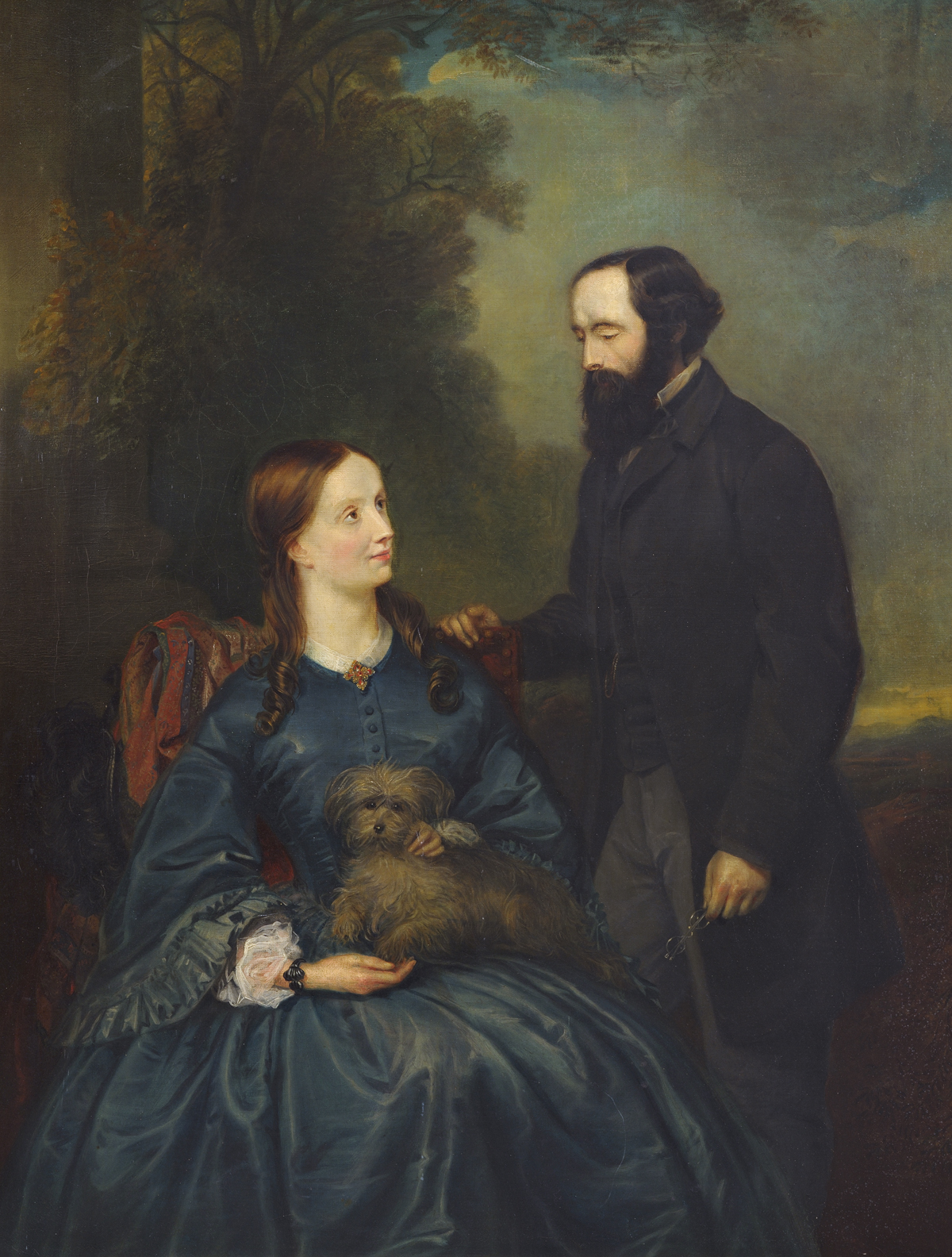
Maxwell focused his attention on a scientific problem that had puzzled astronomers for two centuries: the nature of Saturn's rings. The question was how these rings could remain stable without breaking apart, drifting away, or crashing into Saturn. This problem gained particular prominence as St John's College, Cambridge, chose it as the topic for the 1857 Adams Prize. Maxwell dedicated two years to this study, proving that a regular solid ring would be unstable and a fluid ring would break into blobs due to wave action. Since neither was observed, he concluded that the rings must be composed of countless small particles, which he called "brick-bats," each independently orbiting Saturn. Maxwell was awarded the 130 GBP Adams Prize in 1859 for his essay "On the stability of the motion of Saturn's rings," being the only entrant to make sufficient progress to submit a valid entry. His work was so detailed and convincing that George Biddell Airy remarked, "It is one of the most remarkable applications of mathematics to physics that I have ever seen." Maxwell's prediction was considered the definitive explanation until direct observations by the Voyager flybys in the 1980s confirmed that the rings were indeed composed of particles. It is now understood that the rings' particles are not entirely stable and are gradually being pulled by gravity onto Saturn, with the rings expected to disappear over the next 300 million years.
In 1857, Maxwell became friends with the Reverend Daniel Dewar, then the Principal of Marischal College. Through this connection, Maxwell met Dewar's daughter, Katherine Mary Dewar. They became engaged in February 1858 and married in Aberdeen on June 2, 1858. On the marriage record, Maxwell was listed as Professor of Natural Philosophy at Marischal College. Katherine was seven years Maxwell's senior and assisted him in his laboratory, including work on experiments in viscosity. While comparatively little is known about her, Maxwell's biographer and friend, Lewis Campbell, described their married life as "one of unexampled devotion."
In 1860, Marischal College merged with the neighboring King's College to form the University of Aberdeen. With no room for two professors of Natural Philosophy, Maxwell found himself redundant, despite his scientific reputation. He was unsuccessful in his application for Forbes's recently vacated chair at Edinburgh, which went to his friend Peter Guthrie Tait. Instead, Maxwell accepted the Chair of Natural Philosophy at King's College, London. After recovering from a near-fatal bout of smallpox in 1860, he and his wife moved to London.

1.6. Professorship at King's College, London (1860-1865)
Maxwell's period at King's College, London, was arguably the most productive of his career. For his work on color, he was awarded the Royal Society's Rumford Medal in 1860 and was elected a Fellow of the Royal Society in 1861. During these years, he famously presented the world's first durable color photograph, continued to develop his theories on the viscosity of gases, and proposed a system for defining physical quantities, now known as dimensional analysis. Maxwell frequently attended lectures at the Royal Institution, where he regularly interacted with Michael Faraday. Despite Faraday being 40 years his senior and showing signs of senility, they maintained a strong mutual respect for each other's talents.
This time is especially noteworthy for Maxwell's significant advancements in the fields of electricity and magnetism. He explored the nature of both electric and magnetic fields in his two-part paper "On Physical Lines of Force," published in 1861. In this work, he offered a conceptual model for electromagnetic induction, involving tiny spinning cells of magnetic flux. Two more parts were subsequently added and published in early 1862. The first additional part discussed the nature of electrostatics and displacement current, while the second addressed the rotation of the plane of polarization of light in a magnetic field, a phenomenon discovered by Faraday and now known as the Faraday effect.
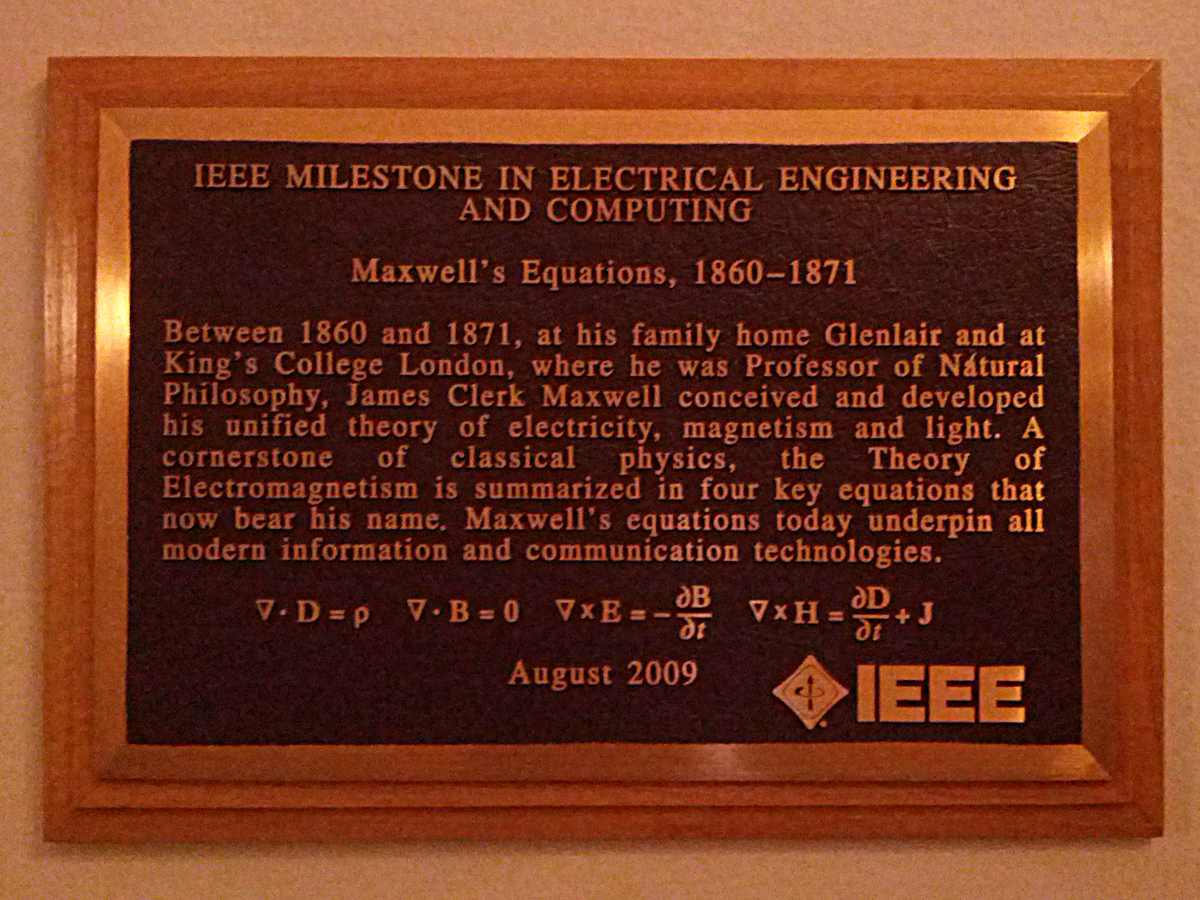
1.7. Cavendish Professorship and Later Years (1865-1879)
In 1865, Maxwell resigned his chair at King's College, London, and returned to Glenlair with Katherine. During this period of independent research, he authored the paper "On governors" (1868), where he mathematically described the behavior of governors-devices used to control the speed of steam engines. This work established the theoretical basis of control engineering. In "On reciprocal figures, frames and diagrams of forces" (1870), he discussed the rigidity of various lattice designs. He also wrote the influential textbook Theory of Heat (1871) and the treatise Matter and Motion (1876). Maxwell was the first to make explicit use of dimensional analysis in 1871.
Maxwell is credited with being the first to grasp the concept of chaos theory, having acknowledged the significance of systems that exhibit "sensitive dependence on initial conditions." He was also the first to emphasize what would later be known as the "butterfly effect" in two discussions during the 1870s.
In 1871, he returned to Cambridge to become the first Cavendish Professor of Physics. Maxwell was instrumental in the development of the Cavendish Laboratory, meticulously supervising every step of its construction and the acquisition of its initial collection of apparatus. One of Maxwell's final significant contributions to science was the meticulous editing of the research of Henry Cavendish, which he augmented with copious original notes. From Cavendish's papers, it became evident that he had investigated, among other things, questions such as the density of the Earth and the composition of water. Maxwell was elected as a member of the American Philosophical Society in 1876.
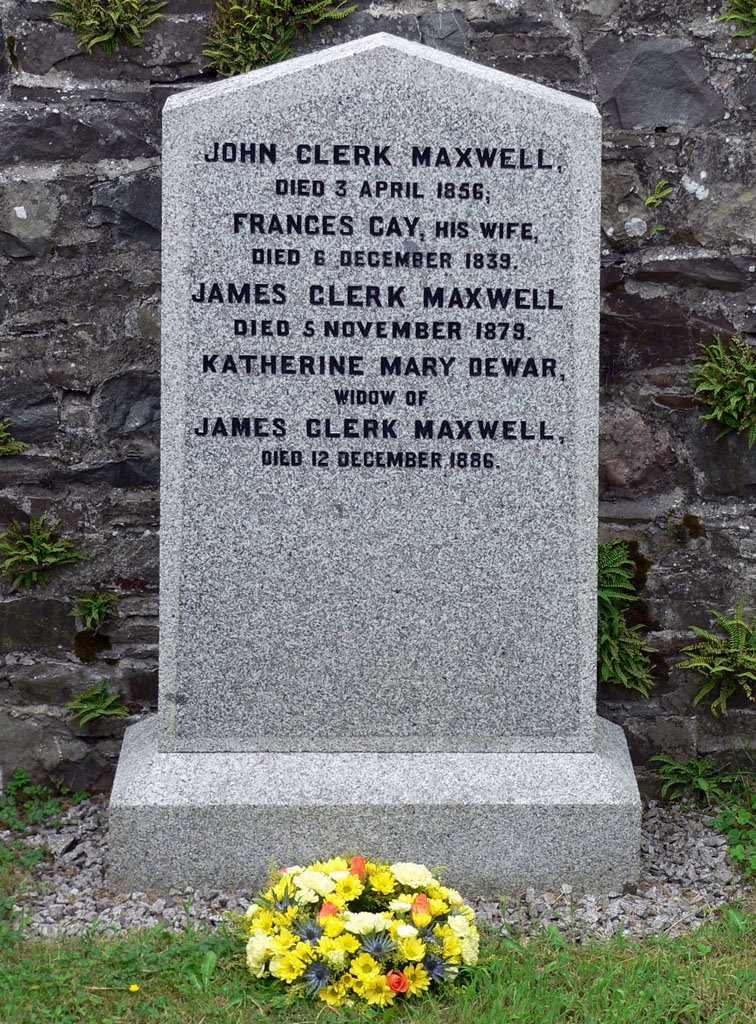
2. Major Scientific Contributions
James Clerk Maxwell's scientific contributions spanned multiple fields of physics and mathematics, but his most revolutionary work centered on unifying electricity, magnetism, and light into a single theoretical framework.
2.1. Electromagnetism
Maxwell's most significant contribution was the unification of electric and magnetic phenomena into a single theoretical framework, a feat that transformed physics.
2.1.1. Maxwell's Equations
Maxwell's investigation into electricity and magnetism began as early as 1855, when his paper "On Faraday's lines of force" was presented to the Cambridge Philosophical Society. This paper offered a simplified model of Michael Faraday's work, detailing the relationship between electricity and magnetism. He consolidated the existing knowledge into a linked system of 20 differential equations with 20 variables. This complex framework was later published as "On Physical Lines of Force" in March 1861.
Around 1862, while lecturing at King's College, Maxwell calculated that the speed of propagation of an electromagnetic field was approximately equal to the speed of light. He considered this more than a mere coincidence, suggesting, "We can scarcely avoid the conclusion that light consists in the transverse undulations of the same medium which is the cause of electric and magnetic phenomena." Further work led Maxwell to demonstrate that his equations predicted the existence of waves of electromagnetic radiation (oscillating electric and magnetic fields) that travel through empty space at a speed derivable from simple electrical experiments. Using data available at the time, Maxwell obtained a velocity of 695 M mph (310.74 M m/s), which closely matched the known speed of light. In his seminal 1865 paper, "A Dynamical Theory of the Electromagnetic Field," Maxwell wrote, "The agreement of the results seems to show that light and magnetism are affections of the same substance, and that light is an electromagnetic disturbance propagated through the field according to electromagnetic laws."
His famous twenty equations, in their modern form of partial differential equations, first appeared in fully developed form in his textbook A Treatise on Electricity and Magnetism in 1873. Much of this work was completed at Glenlair during the period between his London professorship and his appointment to the Cavendish chair. Oliver Heaviside later reduced the complexity of Maxwell's theory to four partial differential equations, now universally known as Maxwell's equations. Although potentials were less popular in the 19th century, the use of scalar and vector potentials is now standard in solving Maxwell's equations. His work achieved the second great unification in physics.
As Barrett and Grimes (1995) describe, Maxwell initially expressed electromagnetism using the algebra of quaternions, making the electromagnetic potential the centerpiece of his theory. However, in 1881, Heaviside replaced the electromagnetic potential field with force fields as the central element of electromagnetic theory, advocating for the "assassination" of the arbitrary electromagnetic potential field. A debate between Heaviside and Peter Guthrie Tait regarding the merits of vector analysis versus quaternions led to the realization that the deeper physical insights offered by quaternions were unnecessary if the theory was purely local, leading to the widespread adoption of vector analysis. Maxwell's quantitative connection between light and electromagnetism proved correct and is considered one of the greatest accomplishments of 19th-century mathematical physics.
The four fundamental Maxwell's equations are often summarized in modern vector notation as:
- Gauss's Law for Electricity**: The electric flux through any closed surface is proportional to the total electric charge enclosed within that surface. This describes how electric charges create electric fields.
- Gauss's Law for Magnetism**: The net magnetic flux through any closed surface is zero, implying that magnetic monopoles (isolated north or south poles) do not exist. Magnetic field lines always form closed loops.
- Faraday's Law of Induction**: A changing magnetic flux through a surface induces an electromotive force (and thus an electric field) around the boundary of that surface. It is fundamental to the operation of generators and transformers.
- Ampère's Circuital Law (with Maxwell's Addition)**: This law, originally formulated by André-Marie Ampère, relates magnetic fields to electric currents. Maxwell's crucial addition, the displacement current term, accounted for the fact that a changing electric field can also produce a magnetic field, even in the absence of a conventional current. This modification was key to predicting electromagnetic waves.
These equations formed the cornerstone of classical electromagnetism and continue to be fundamental in physics. Heinrich Rudolf Hertz, who experimentally confirmed the existence of radio waves predicted by Maxwell, famously remarked, "It is impossible to study this wonderful theory without feeling as if the mathematical equations have an independent life and intelligence of their own, as if they are wiser than ourselves, indeed even wiser than their discoverer, as if they give more than he put into them."
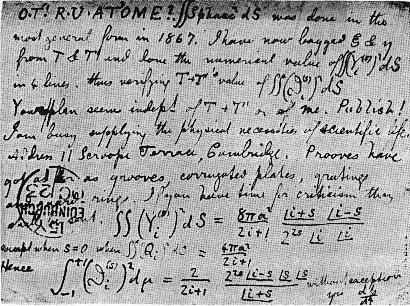
2.1.2. Electromagnetic Theory of Light and Aether Concept
Maxwell's groundbreaking theory proposed that light is an electromagnetic wave. He established a quantitative connection between light and electromagnetism, calculating that the speed of electromagnetic waves matched the experimentally determined speed of light. This profound realization unified the phenomena of light, electricity, and magnetism.
Initially, Maxwell, like many scientists of his time, assumed the existence of a luminiferous aether as the medium through which electromagnetic waves, including light, propagated. This hypothetical medium was thought to permeate all space. However, over time, the concept of such an all-pervading yet mechanically undetectable medium became increasingly difficult to reconcile with experimental observations. Experiments like the Michelson-Morley experiment famously failed to detect this aether. Furthermore, the aether concept seemed to imply an absolute frame of reference in which Maxwell's equations were uniquely valid, leading to an uncomfortable implication that the equations would change form for a moving observer. These conceptual and experimental difficulties directly inspired Albert Einstein's formulation of the theory of special relativity, which successfully dispensed with the need for a stationary luminiferous aether. Einstein explicitly acknowledged Maxwell's foundational work, stating, "One scientific epoch ended and another began with James Clerk Maxwell." He also credited Maxwell's equations as the origin of his special theory of relativity, saying, "The special theory of relativity owes its origins to Maxwell's equations of the electromagnetic field."
2.2. Kinetic Theory of Gases and Statistical Mechanics
Maxwell also made significant contributions to the kinetic theory of gases. While the theory originated with Daniel Bernoulli and was advanced by figures like John Herapath, John James Waterston, James Prescott Joule, and Rudolf Clausius, Maxwell's work brought about enormous development, establishing him as both an experimenter (on the laws of gaseous friction) and a mathematician in this field.
Between 1859 and 1866, he developed the statistical theory describing the distribution of velocities in gas particles, a work later generalized by Ludwig Boltzmann. The resulting formula, known as the Maxwell-Boltzmann distribution, provides the fraction of gas molecules moving at a specified velocity at any given temperature. This approach significantly generalized previously established laws of thermodynamics and offered a more comprehensive explanation for existing observations and experiments. His work in thermodynamics also led him to conceive the famous thought experiment known as Maxwell's demon, which explored a hypothetical scenario where the second law of thermodynamics might be violated by an imaginary being capable of sorting particles by energy.
In 1871, Maxwell established what are now known as Maxwell relations, which are statements of equality among the second derivatives of thermodynamic potentials with respect to different thermodynamic variables. In 1874, he constructed a plaster thermodynamic visualization to explore phase transitions, based on the graphical thermodynamics papers of the American scientist Josiah Willard Gibbs. Peter Guthrie Tait referred to Maxwell as the "leading molecular scientist" of his time, and it was said after Maxwell's death that "only one man lived who could understand Gibbs's papers. That was Maxwell, and now he is dead."

2.3. Colour Theory and Colour Photography
Along with many physicists of his era, Maxwell held a strong interest in psychology. Following the footsteps of Isaac Newton and Thomas Young, he was particularly fascinated by the study of colour vision. From 1855 to 1872, Maxwell published a series of investigations into color perception, colour-blindness, and color theory, for which he was awarded the Rumford Medal for his work "On the Theory of Colour Vision."
Newton had previously demonstrated, using prisms, that white light (such as sunlight) is composed of various monochromatic components that can be recombined to form white light. Newton also showed that two physically different light mixtures (e.g., an orange paint made from yellow and red, and a monochromatic orange light) could appear identical to the eye, a phenomenon known as metamerism. Thomas Young later proposed that this paradox could be explained by colors being perceived through a limited number of channels in the eyes, specifically three, leading to the trichromatic color theory. Maxwell utilized the recently developed techniques of linear algebra to prove Young's theory. He demonstrated that any monochromatic light stimulating three receptors could be equally stimulated by a set of three different monochromatic lights. To do this, he invented color matching experiments and the field of colorimetry.
Maxwell was also keenly interested in applying his theory of color perception to colour photography. His psychological work directly informed his proposal: if a sum of any three lights could reproduce any perceivable color, then color photographs could be produced using a set of three colored filters. In his 1855 paper, Maxwell proposed that if three black-and-white photographs of a scene were taken through red, green, and blue filters, and transparent prints of these images were then projected onto a screen using three projectors equipped with similar filters, the superimposed result would be perceived by the human eye as a complete reproduction of all the colors in the original scene.
During an 1861 lecture on color theory at the Royal Institution, Maxwell presented the world's first demonstration of durable color photography based on this principle of three-color analysis and synthesis. The photograph was taken by Thomas Sutton, inventor of the single-lens reflex camera. Sutton photographed a tartan ribbon three times, using red, green, and blue filters. A fourth photograph was also taken through a yellow filter, but according to Maxwell, it was not used in the demonstration. Due to the limitations of Sutton's photographic plates, which were insensitive to red and barely sensitive to green, the results of this pioneering experiment were far from perfect. The published account of the lecture noted that if the red and green images had been as fully photographed as the blue, it would have been a truly colored image. It suggested that using photographic materials more sensitive to less refrangible rays would greatly improve the representation of colors. Researchers in 1961 later determined that the partial success of the red-filtered exposure was due to ultraviolet light, which is strongly reflected by some red dyes, not entirely blocked by the red filter used, and within the sensitivity range of the collodion process employed by Sutton.
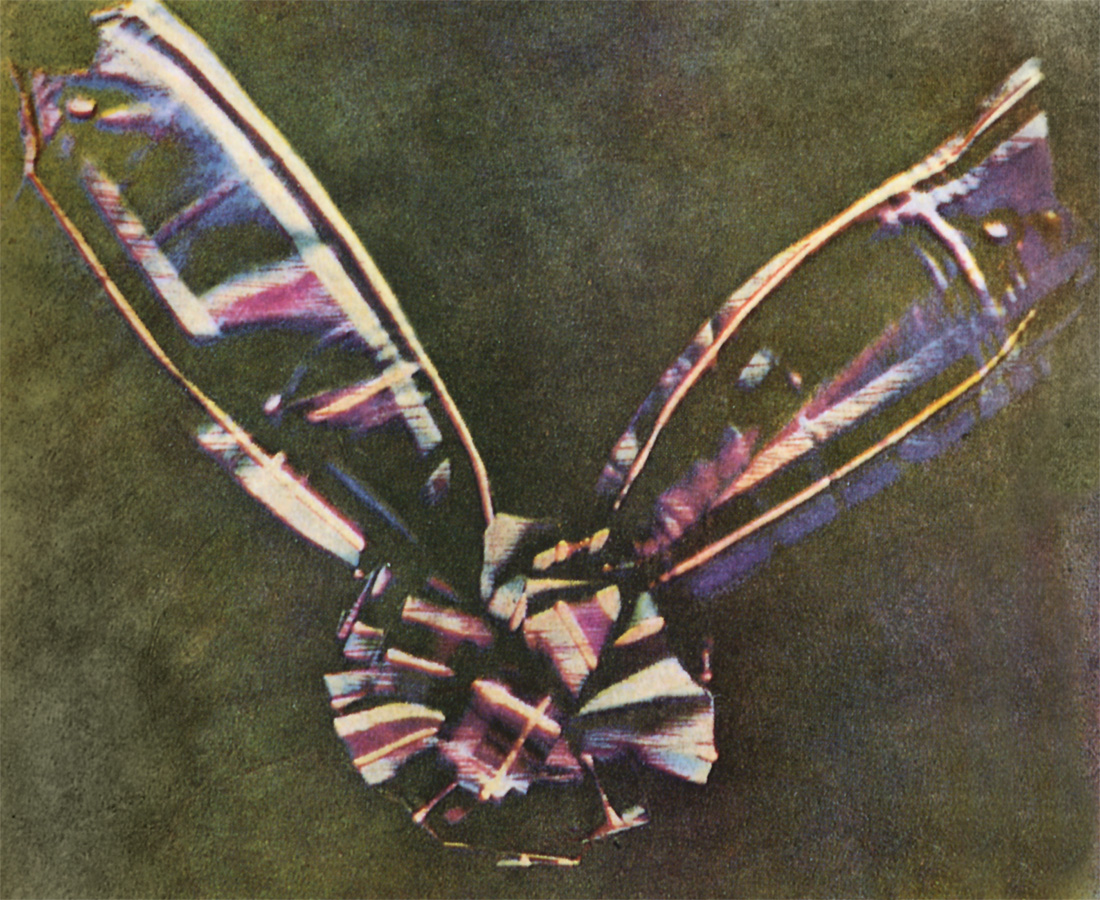
2.4. Control Theory
Maxwell made foundational contributions to the theoretical basis of control engineering. In his paper "On governors," published in the Proceedings of the Royal Society, vol. 16 (1867-1868), he provided a mathematical description of the behavior of governors. These devices, commonly used in steam engines, control speed by regulating the flow of steam. Maxwell's analysis was the earliest mathematical treatment of control systems, establishing a crucial theoretical framework for the field of control engineering and cybernetics.
3. Personal Life and Beliefs
Beyond his scientific genius, James Clerk Maxwell possessed a rich personal life characterized by a love for poetry, a unique social demeanor, and a profound evangelical Christian faith that he actively explored.
Maxwell was a great admirer of Scottish poetry, often memorizing and reciting poems, and even writing his own. His most well-known poetic work is "Rigid Body Sings," a humorous adaptation of Robert Burns' "Comin' Through the Rye." The opening lines read:
Gin a body meet a body
Flyin' through the air.
Gin a body hit a body,
Will it fly? And where?
A collection of his poems was published by his friend Lewis Campbell in 1882.
Descriptions of Maxwell often note his remarkable intellectual qualities were sometimes accompanied by a degree of social awkwardness. He formulated an aphorism that guided his own scientific conduct: "He that would enjoy life and act with freedom must have the work of the day continually before his eyes. Not yesterday's work, lest he fall into despair, not to-morrow's, lest he become a visionary-not that which ends with the day, which is a worldly work, nor yet that only which remains to eternity, for by it he cannot shape his action. Happy is the man who can recognize in the work of to-day a connected portion of the work of life, and an embodiment of the work of eternity. The foundations of his confidence are unchangeable, for he has been made a partaker of Infinity. He strenuously works out his daily enterprises, because the present is given him for a possession."
Maxwell was an evangelical Presbyterian and, in his later years, became an Elder of the Church of Scotland. His religious beliefs and related activities have been the focus of various studies. Having attended both Church of Scotland (his father's denomination) and Episcopalian (his mother's denomination) services as a child, Maxwell experienced an evangelical conversion in April 1853. This conversion may have aligned him with an antipositivist position, reflecting his intellectual examination of his faith. Evidence from his student years suggests he deeply examined his faith, and his extensive knowledge of the Bible indicates his beliefs were rooted in thorough understanding.
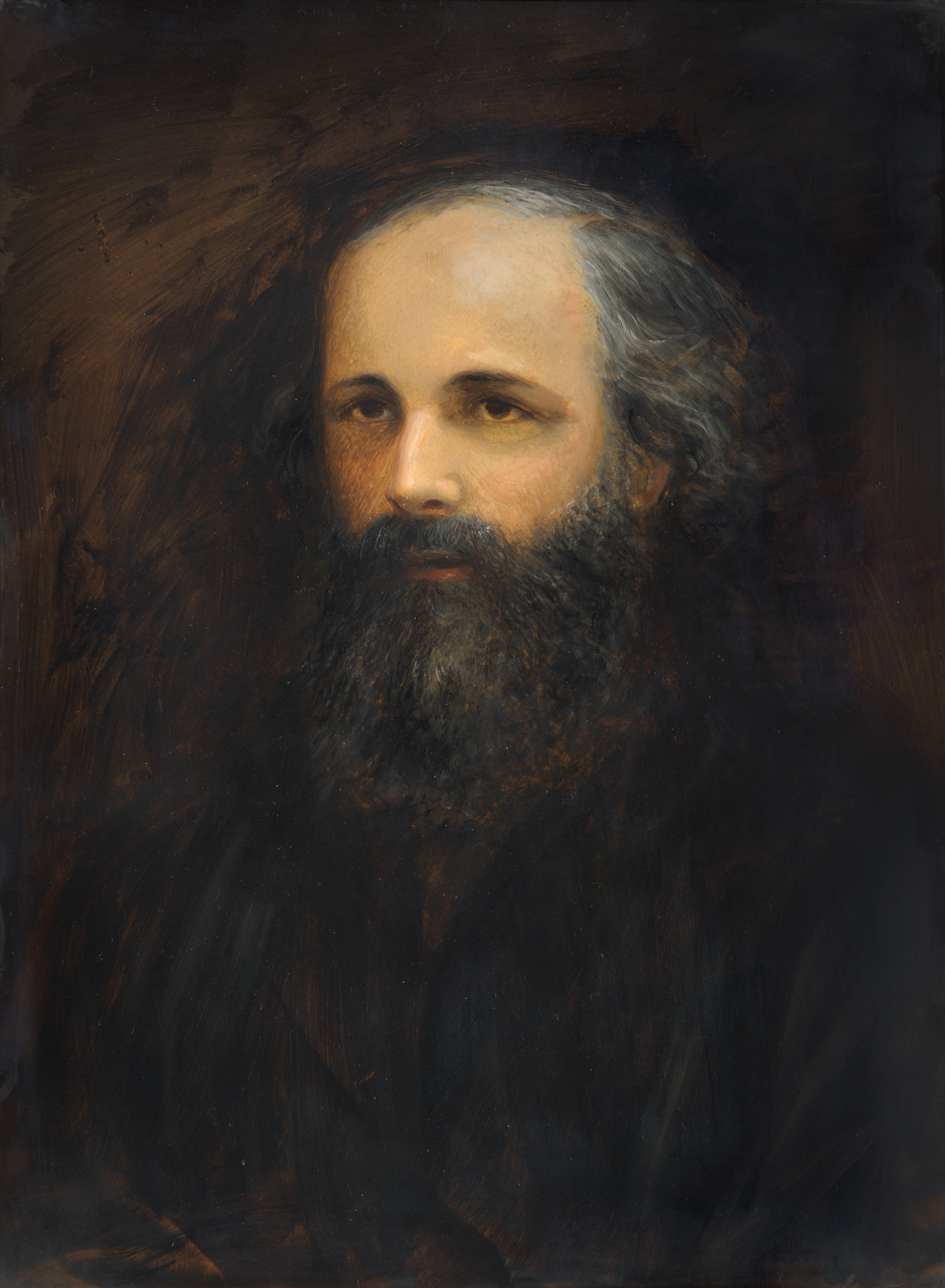
4. Death
In April 1879, James Clerk Maxwell began to experience difficulty in swallowing, which was the first symptom of his fatal illness. He died in Cambridge of abdominal cancer on November 5, 1879, at the relatively young age of 48. Coincidentally, his mother had died at the same age from the same type of cancer. The minister who frequently visited him in his final weeks noted his astonishing lucidity and the immense power and scope of his memory. More notably, the minister remarked on Maxwell's unwavering faith: "...his illness drew out the whole heart and soul and spirit of the man: his firm and undoubting faith in the Incarnation and all its results; in the full sufficiency of the Atonement; in the work of the Holy Spirit. He had gauged and fathomed all the schemes and systems of philosophy, and had found them utterly empty and unsatisfying-'unworkable' was his own word about them-and he turned with simple faith to the Gospel of the Saviour."
As his death approached, Maxwell reportedly told a Cambridge colleague, "I have been thinking how very gently I have always been dealt with. I have never had a violent shove all my life. The only desire which I can have is like David to serve my own generation by the will of God, and then fall asleep."
Maxwell is buried at Parton Kirk, near Castle Douglas in Galloway, close to where he grew up. His comprehensive biography, The Life of James Clerk Maxwell, written by his former schoolfellow and lifelong friend Professor Lewis Campbell, was published in 1882. His collected works were subsequently issued in two volumes by the Cambridge University Press in 1890.
The executors of Maxwell's estate included his physician George Edward Paget, G. G. Stokes, and his cousin Colin Mackenzie. Due to his own workload, Stokes entrusted Maxwell's papers to William Garnett, who held effective custody of them until approximately 1884. A memorial inscription honoring Maxwell can be found near the choir screen at Westminster Abbey.
5. Legacy and Assessment
James Clerk Maxwell's legacy is one of profound and lasting impact on the field of physics, earning him a place among the most influential scientists in history. His work laid theoretical foundations that enabled vast advancements in technology and understanding.
5.1. Academic Assessment and Influence
Maxwell is held in exceptionally high regard within the physics community. In a survey of the 100 most prominent physicists conducted by Physics World, Maxwell was voted the third greatest physicist of all time, surpassed only by Isaac Newton and Albert Einstein. Another survey of rank-and-file physicists by PhysicsWeb also placed him third.
His contributions are widely considered to be of the same magnitude as those of Newton and Einstein. On the centenary of Maxwell's birthday, Einstein lauded his work as the "most profound and the most fruitful that physics has experienced since the time of Newton." During a visit to the University of Cambridge in 1922, when informed by his host that he had achieved great things by standing on Newton's shoulders, Einstein famously replied, "No I don't. I stand on the shoulders of Maxwell." Tom Siegfried described Maxwell as "one of those once-in-a-century geniuses who perceived the physical world with sharper senses than those around him."
Maxwell's discoveries were pivotal in ushering in the era of modern physics, laying crucial foundations for fields such as theory of relativity (he introduced the term into physics) and quantum mechanics. He is also regarded as a founder of the modern field of electrical engineering due to his equations and his effective methods for analyzing network problems and linear conductors. Furthermore, he is credited with being the first to understand chaos theory and the first to emphasize the concept of the "butterfly effect". He also devised modern dimensional analysis and played a role in establishing the CGS system of measurement. His 1863 paper On Governors remains an important foundation for control theory and cybernetics, representing the earliest mathematical analysis on control systems.
5.2. Commemoration and Memorials
Numerous honors, awards, educational institutions, buildings, and other entities have been named after James Clerk Maxwell, serving as lasting tributes to his profound contributions to science and technology:
- The maxwell (Mx), a derived unit in the CGS system of units, measures magnetic flux.
- The IEEE Maxwell Award recognizes outstanding contributions to the field of electrical engineering and physics.
- Maxwell Montes, a mountain range on Venus, and the Maxwell Gap in Saturn's rings are named in his honor.
- The James Clerk Maxwell Telescope, a 15-meter submillimetre wavelength telescope, is located in Hawaii.
- The James Clerk Maxwell Building at the University of Edinburgh houses the schools of mathematics, physics, and meteorology.
- At King's College, London, the James Clerk Maxwell Building in its Waterloo campus and the physics students' society bear his name.
- The James Clerk Maxwell Science Centre is located at the Edinburgh Academy.
- The Maxwell Centre at the University of Cambridge fosters collaboration between business and scientists in physical sciences and technology.
- A statue of Maxwell, created by Alexander Stoddart, was unveiled in 2008 on George Street, Edinburgh, commissioned by The Royal Society of Edinburgh.
- The GPU manufacturer Nvidia named its architecture for the GeForce 900 series of graphics processing chips "Maxwell."
- The ANSYS software suite for electromagnetic analysis is also named "Maxwell."
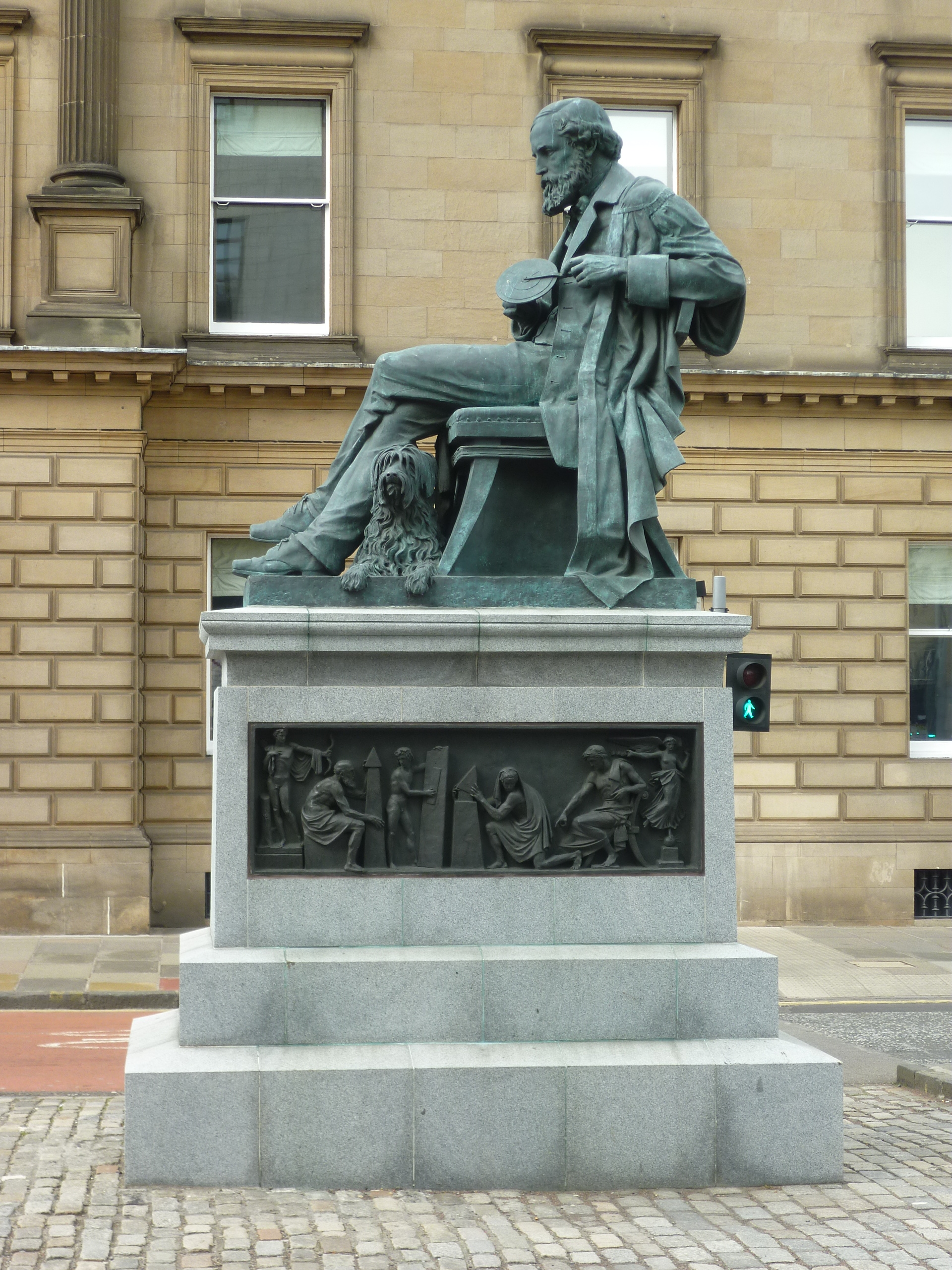
6. Major Works and Papers
James Clerk Maxwell's principal scientific books and academic papers:
- "On the description of oval curves and those having a plurality of foci" (1846)
- "On the Equilibrium of Elastic Solids" (1850)
- "Rolling Curves" (1850)
- "On the Transformation of Surfaces by Bending" (1854)
- "Experiments on Colour, as perceived by the Eye, with Remarks on Colour-Blindness" (1855)
- "On Faraday's lines of force, Part 1" (1855)
- "On Faraday's lines of force, Part 2" (1856)
- "On the stability of the motion of Saturn's rings" (1859)
- "Illustrations of the Dynamical Theory of Gases" (1860)
- "On the Theory of Compound Colours" (1860)
- "On Physical Lines of Force, Parts 1 & 2" (1861)
- "On physical lines of force, Parts 3 & 4" (1862)
- "A Dynamical Theory of the Electromagnetic Field" (1865)
- "On the Dynamical Theory of Gases" (1867)
- "On governors" (1868)
- "On reciprocal figures, frames and diagrams of forces" (1870)
- Theory of Heat (1871)
- A Treatise on Electricity and Magnetism (Vol I & II, 1873)
- Matter and Motion (1876)
- "On the average distribution of energy in a system of material points, subject to mutual attraction, and acting on each other in accordance with the Boltzmann theorem" (1879)
- "On Stresses in Rarified Gases Arising from Inequalities of Temperature" (1879)
- The Electrical Researches of the Honourable Henry Cavendish (edited with notes, 1879)
- An Elementary Treatise on Electricity (published posthumously, 1881)
- The Scientific Papers of James Clerk Maxwell (Vol I & II, published posthumously, 1890)
- Contributions to Encyclopædia Britannica Ninth Edition (1878): Atom, Attraction, and Ether.
- Contributions to Encyclopædia Britannica Eleventh Edition (1911): Capillary Action, Diagram, and Faraday, Michael.